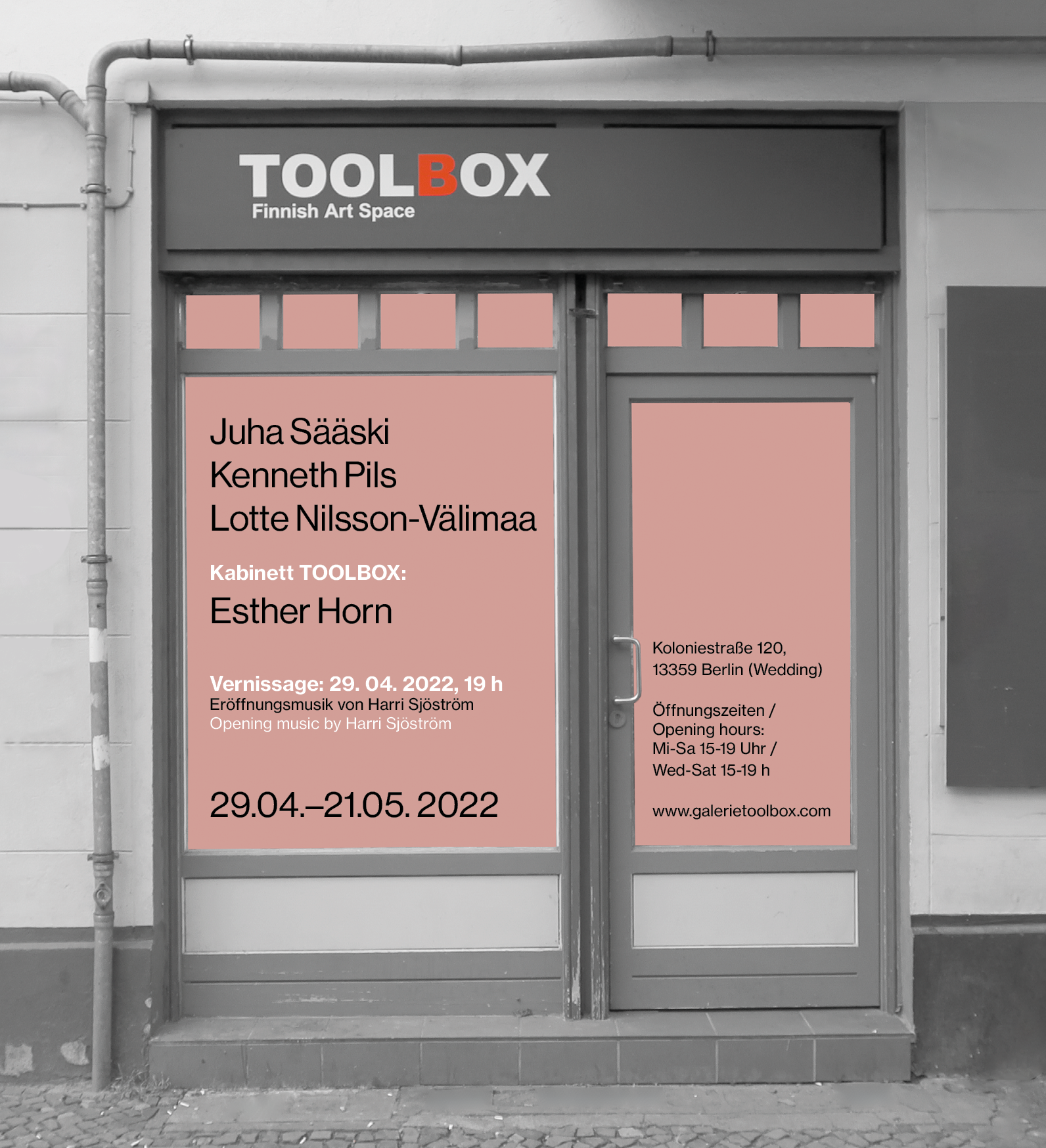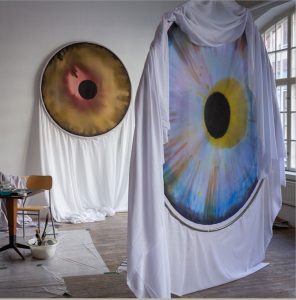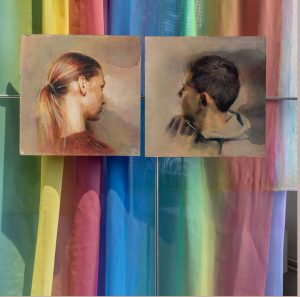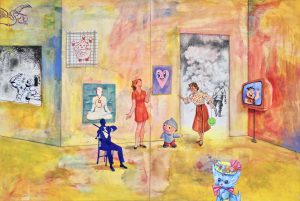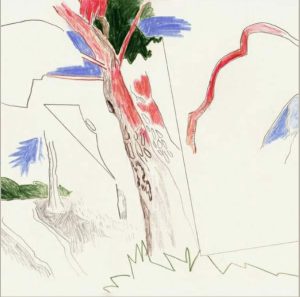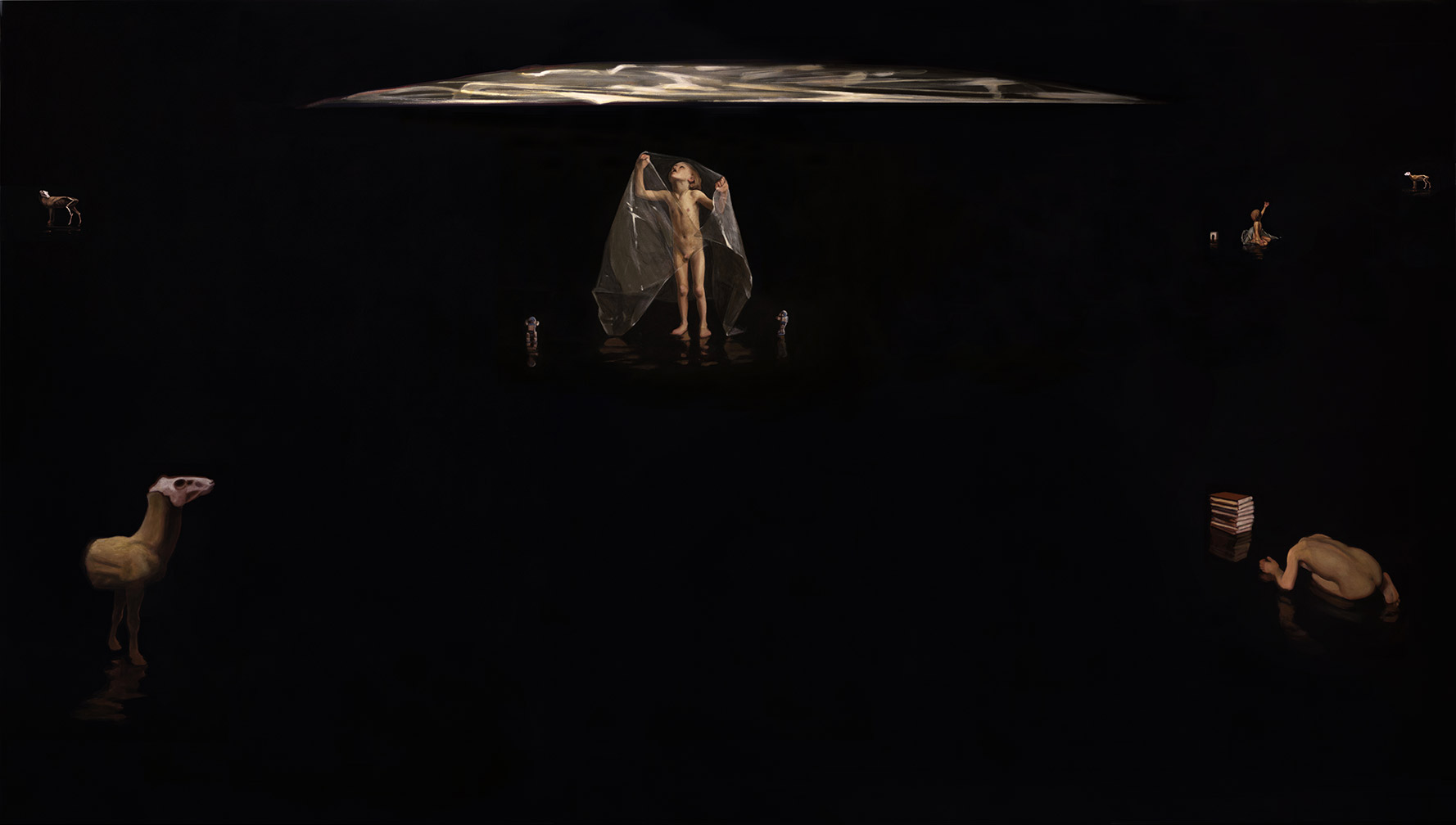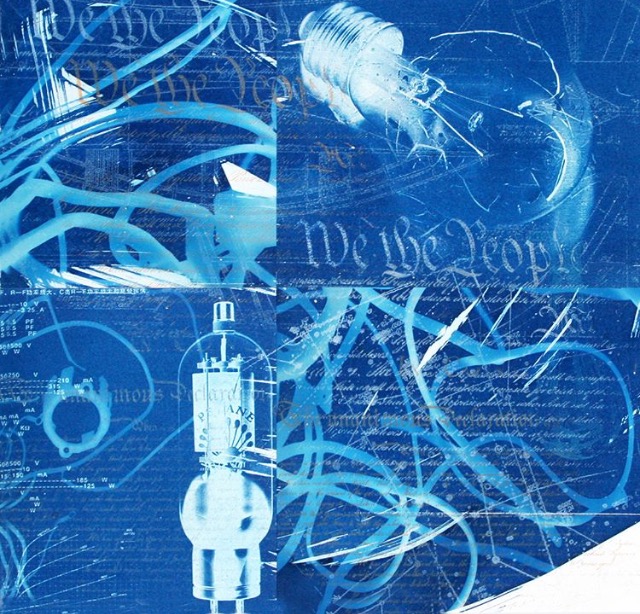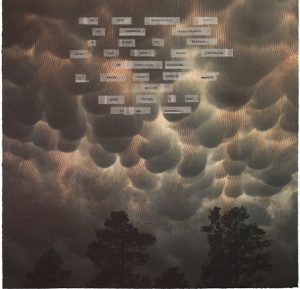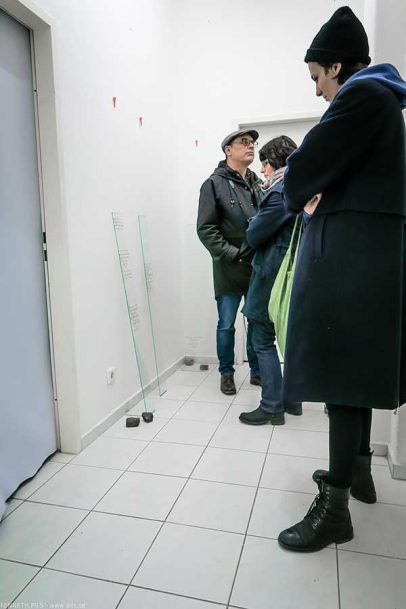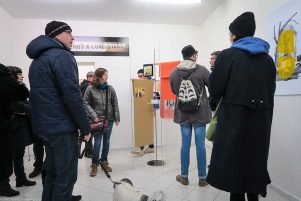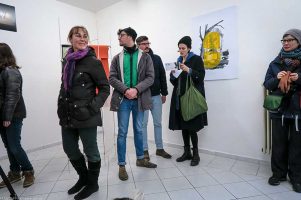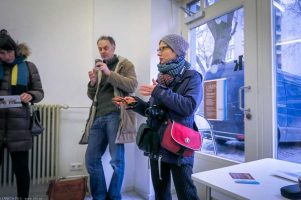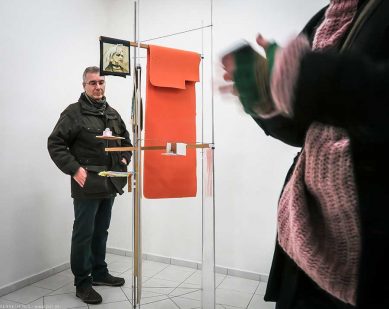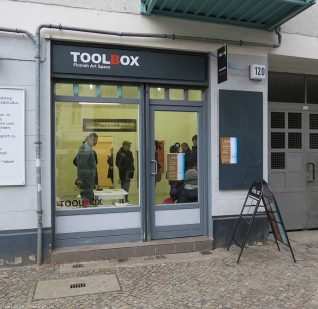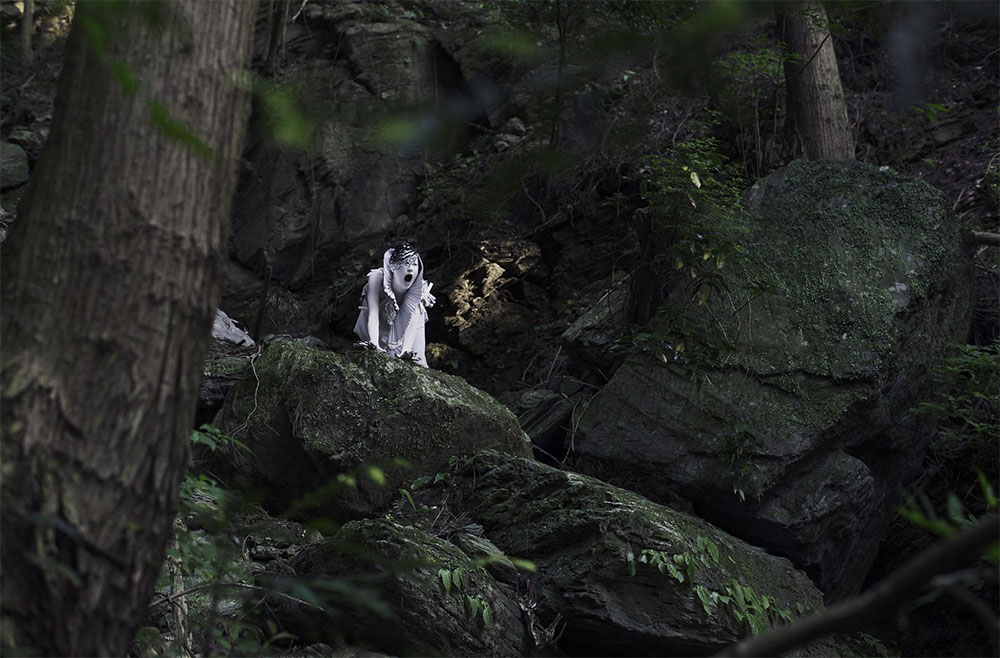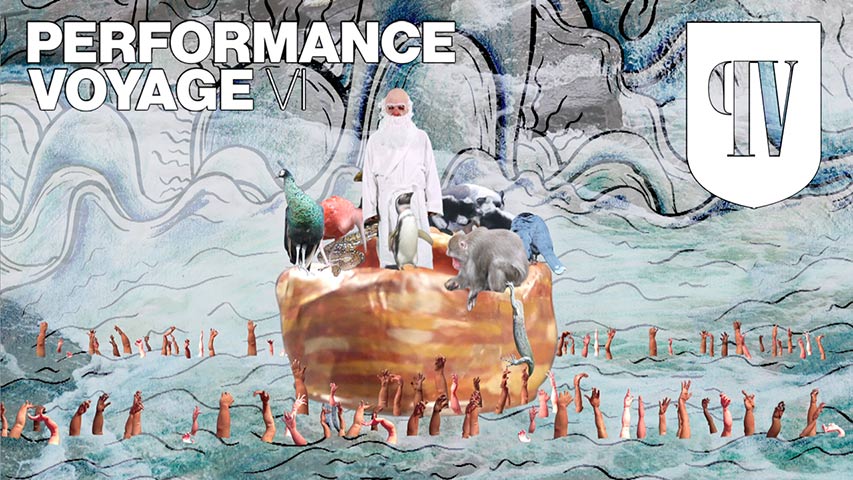Read in German (PDF)
Read in Finnish (PDF)
Chronicle
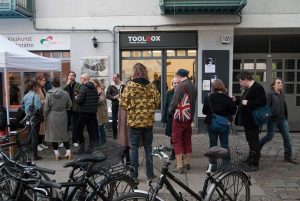
In Berlin’s district Wedding, more precisely in the lively Koloniestraße, lies Gallery Toolbox, which for ten years has provided a showcase especially for the diverse world of Finnish contemporary art. This Finnish-German project space, “taidetila” in Finnish and “Projektraum” in German, was established in 2012 and has organised more than 80 art exhibitions and dozens of other events over the past years. At the time of this publication, the members of the Toolbox are the artists Maija Helasvuo, Sampsa Indrén, Minna Jatkola, Mika Karhu, Niina Räty, Ilkka Sariola, Juha Sääski and Andreas Wolf.
Gallery Toolbox is currently run by an artists’ cooperative with eight members and, from the very beginning, it has been quite an ambitious art export project in Berlin, which is, without a doubt, one of the most important centres for contemporary art in Europe. The importance of the Toolbox is particularly emphasised by the fact that it is one of the few still active galleries in the city that is mainly specialised in Finnish art. However, the success of the project space can by no means be taken for granted, as, in addition to its achievements, the Toolbox has experienced both small and sometimes greater challenges on its ten-year journey. The main reason for the success of the project may be that, from the very beginning, it has been primarily a project of passion by artists for artists.
The Toolbox is a space between the Finnish and German art worlds, where people from inside and outside of the art field can meet each other.
Andreas Wolf
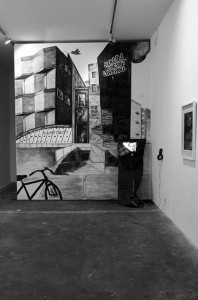 But how did it all actually start? Gallery Toolbox, which is now celebrating its milestone anniversary, was officially established in 2012. However, the first discussions about a Finnish gallery in Berlin already date back to the early 2010s. Juha Sääski, one of the founding members, recalls how the topic came up regularly with Mika Karhu, for example, in the break room at Aalto University, where they both used to work at that time. These vague visions surprisingly concretised into an executable concept when an opportunity arose in 2012. Mika Karhu was visiting Berlin for his planned exhibition at the Finnish-owned Kuma Gallery in the district of Mitte. However, to the surprise of the artist, who had already arrived in Berlin, the gallerist Suvi Lehtinen informed him that the exhibition could not be organised after all, as Kuma’s activities unfortunately had to be terminated. Yet, after talking to the gallerist for a while, Mika Karhu came up with the idea that he himself could possibly rent the premise left vacant. Lehtinen provisionally agreed on the proposal, and Karhu promised to gather the required members in the coming days.
But how did it all actually start? Gallery Toolbox, which is now celebrating its milestone anniversary, was officially established in 2012. However, the first discussions about a Finnish gallery in Berlin already date back to the early 2010s. Juha Sääski, one of the founding members, recalls how the topic came up regularly with Mika Karhu, for example, in the break room at Aalto University, where they both used to work at that time. These vague visions surprisingly concretised into an executable concept when an opportunity arose in 2012. Mika Karhu was visiting Berlin for his planned exhibition at the Finnish-owned Kuma Gallery in the district of Mitte. However, to the surprise of the artist, who had already arrived in Berlin, the gallerist Suvi Lehtinen informed him that the exhibition could not be organised after all, as Kuma’s activities unfortunately had to be terminated. Yet, after talking to the gallerist for a while, Mika Karhu came up with the idea that he himself could possibly rent the premise left vacant. Lehtinen provisionally agreed on the proposal, and Karhu promised to gather the required members in the coming days.
Nevertheless, the implementation of Mika Karhu’s plan was not written in stone. Although there was great interest among the invited artists in establishing a gallery, the other side of the scale weighted heavily with the challenges of a project space. Firstly, it was obvious that activities in Germany would further increase the workload of the ones who would join as members. In addition, the financial risk and burden connected to the project lead to many invited persons rejecting the offer. For example, for establishing the gallery, each member had to contribute a starting amount of 2,000 euros for the kickoff of the activities, and at that time, it was still unclear which kind of bottomless pit for money this project could possibly become in the future.
Despite these factors, the decision to establish the gallery in Berlin was made shortly after the premise in Mitte was offered for the use of a new Finnish gallery. The artists who were interested in the project understood how important it was to start activities in Germany, both for the expansion of their own exhibition activities as well as for the export of Finnish fine arts.
Over night, I pondered over Mika’s inquiry and considered the possible financial risks and the additional amount of work for my life, which was already filled with work. My biggest concern was the financial risk, but I realised that this was one of those once-in-a-lifetime opportunities, and I joined in and have not regretted it.
Juha Sääski
Already during the same spring, the Artists’ Cooperative Toolbox started its activities with its founding members Maija Helasvuo, Minna Jatkola, Mika Karhu, Jukka Lehtinen, Niina Räty, Juha Sääski and Jan Kenneth Weckman. The first opening of the new gallery located at Novalisstraße 7 was celebrated on 1st September 2012 with the members’ group exhibition “Social Box”.
However, starting activities in a foreign country brought its own challenges which, according to Sääski, were greater than the members could have expected. Especially the fact that the members of the gallery did not live in Germany themselves caused surprising problems. According to Helasvuo, even managing seemingly simple things, such as concluding an electricity contract, depended on, among other things, the friendliness of the clerks who dealt with the matter. Networking and publicising of the project space also had to be started practically from scratch.
In addition to the hard work of the members, the students who traveled from Finland to Berlin and worked as interns, made it possible to set the activities in motion: Their role as link between the two countries and in running the gallery has been truly significant throughout the Toolbox’s ten-year existence. Furthermore, the Finnish Institute in Germany was of great help in building networks in the foreign city, and during the first years, financial support for art transportation was provided by the Frame foundation. Nonetheless, the most important driving force behind the project was the burning thrive of the cooperative members to contribute to the important task. This helped to overcome the arising obstacles.
Our motivation was high and we were ready for action. We felt like we were on the verge of something new. So I barely remember challenges; it felt like everything is possible.
Maija Helasvuo
In the first years, however, it slowly became clear that the Toolbox’s activities in the gallery in Mitte were not on a sustainable basis. The biggest difficulties were related to the costs, as the rental costs and other expenses of the premise in the Novalisstraße were quite high even compared to the price level of the rest of Berlin. In turn, this had lead, among other things, to the fact that exhibiting Finnish artists had to be charged fairly high usage fees in order to be able to cover the costs. Even the location of the gallery proved to be problematic: Although the Toolbox was only a few kilometres away from the lively tourist centres of downtown Berlin, the Novalisstraße itself and its surrounding quarters were located in a rather quiet, mainly residential area. Thus, it was evident that the Toolbox needed to be relocated in order to be able to keep its doors open also in the future.
In 2014, a turning point occurred after all, partly due to a coincidence which could be described as perhaps the most important one in the entire history of the Toolbox. According to Andreas Wolf, who nowadays is also a member of the project space, his partner Anna E. Wilkens invited him and the artist Jovan Balov to an exhibition opening at a Finnish gallery, which was at that point still unknown to all three of them. There, they met Mika Karhu. This encounter marked the surprising beginning of a collaboration which still lasts until this day, and which came to change the future of the gallery in a decisive way.
The timing for new acquaintances was perfect, as Wolf and Balov had a solution to offer for the relocation plans of the cooperative. That solution was the Kolonie Wedding: as the name implies, an organisation operating in the Wedding district, which today includes more than twenty non-commercial art spaces, in German Projektraum. Soon it became clear to the Finns that being part of the gallery community in Wedding would contribute to the Toolbox’s task of presenting Finnish art in Germany. First of all, it was important to the cooperative to finally increase their long-needed contacts and partners in Berlin, which joining the Kolonie Wedding could also offer to the Toolbox. Additionally, the membership was crucial from an economic point of view, as the city of Berlin supported the community, among other things, by subsidising the rent of the project spaces.
Based on these factors in particular, the Toolbox decided to apply for the membership at the Kolonie Wedding, which was accepted and the gallery relocated to its current address in the Koloniestraße in April 2015. On top of that, Andreas Wolf, who had proposed the membership at Kolonie Wedding, became a member of Gallery Toolbox in 2015, which was an essential improvement for the local management: Through him, there was finally a local member in the group, who was well-acquainted with Berlin’s art world.
In addition to these opportunities, the new location also brought forth new kinds of challenges. Firstly, the gallery in Wedding was smaller than the previous one, and there was, for example, significantly less storage space than in the Novalisstraße. Initially, the Toolbox also had a residency for artists and interns at its new location, but eventually, it had to be given up due to the fact that Berlin’s regulations on short-term rental of residential spaces became stricter. Even the district Wedding itself had its own challenges: One of the main reasons for the city of Berlin to offer support to the Kolonie Wedding community was their wish to calm down the neighbourhood, which was even considered as a part of the city with a bad reputation, through means of low-threshold culture and art spaces. However, the negative reputation of the area stuck firmly in the locals’ heads. According to Juha Sääski, for example, a Berlin-local van driver who helped move the gallery from Mitte to Wedding was amused by the Toolbox’s new location: “The person started laughing that it was impossible to run an art gallery in Koloniestraße as it is a slum.”
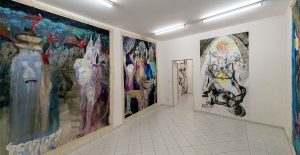 Despite these thoroughly negative predictions, Gallery Toolbox managed to consolidate its position as part of the Kolonie Wedding community, and with its new location, also the number of exhibition visitors increased. Furthermore, through relocating the project space, the activities became more international. Besides Finnish art, the Toolbox has particularly presented works by Berlin-based artists over the years. Through the membership at Kolonie Wedding, Gallery Toolbox has also partaken in art export projects with Sweden, Great Britain and the United States of America alongside Germany. In return, Kolonie Wedding organised a group exhibition at the Hyvinkää Art Museum in 2017. This exhibition was curated by Mika Karhu, Andreas Wolf and Anna E. Wilkens.
Despite these thoroughly negative predictions, Gallery Toolbox managed to consolidate its position as part of the Kolonie Wedding community, and with its new location, also the number of exhibition visitors increased. Furthermore, through relocating the project space, the activities became more international. Besides Finnish art, the Toolbox has particularly presented works by Berlin-based artists over the years. Through the membership at Kolonie Wedding, Gallery Toolbox has also partaken in art export projects with Sweden, Great Britain and the United States of America alongside Germany. In return, Kolonie Wedding organised a group exhibition at the Hyvinkää Art Museum in 2017. This exhibition was curated by Mika Karhu, Andreas Wolf and Anna E. Wilkens.
 Apart from contemporary art, the Toolbox has offered its spaces also for other cultural events, of which live music has achieved an important position throughout the past years. The internationally renowned saxophonist Harri Sjöström has taken the leading role in organising concerts in the premise. The musician has lived in Berlin since the 1980s and has promoted music export over the past decades. He got to know the members of the Toolbox already in 2013, and ever since, the project space has regularly functioned as a stage for the Soundscapes concerts, which were conceptualised by Sjöström and focus on improvised music. Over time, the concerts, which had started in the Toolbox, expanded from Berlin to Munich and Helsinki. A broad spectrum of Finnish and international top musicians perform at these concerts.
Apart from contemporary art, the Toolbox has offered its spaces also for other cultural events, of which live music has achieved an important position throughout the past years. The internationally renowned saxophonist Harri Sjöström has taken the leading role in organising concerts in the premise. The musician has lived in Berlin since the 1980s and has promoted music export over the past decades. He got to know the members of the Toolbox already in 2013, and ever since, the project space has regularly functioned as a stage for the Soundscapes concerts, which were conceptualised by Sjöström and focus on improvised music. Over time, the concerts, which had started in the Toolbox, expanded from Berlin to Munich and Helsinki. A broad spectrum of Finnish and international top musicians perform at these concerts.
The cultural exchange between Finland and Berlin is important to me, and the Toolbox has offered me a unique opportunity in the realm of new music and improvised music. The concerts that are held in these spaces have also contributed to the visibility of Finnish contemporary art in Berlin, as they have attracted plenty of audiences from outside of the art world.
Harri Sjöström
However, the upswing of these years of development was slowed down by the COVID-19 pandemic that began in the spring of 2020, which severely shook the Toolbox like the rest of the cultural sector. This was especially serious for the Toolbox, as the activities of the gallery are particularly aimed at internationality. This brought forth great challenges when the borders stayed closed for one and a half years. Amidst the uncertainty and the ever-changing regulations, it was practically impossible to, for example, plan the exhibition activities so that Gallery Toolbox had to keep its doors almost fully closed for one and a half years.
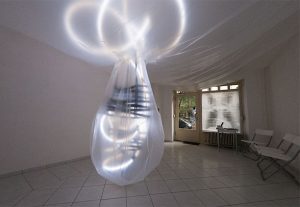 In August 2021, the regular exhibition activities could finally be resumed and, although the decade that started bleakly has shown that the future is unpredictable, this has not prevented the planning for the concept’s further development. In some respects, the hopes for the next ten years of the Toolbox are clear: The long-term wish of the members has especially been to establish a second gallery in Helsinki or to organise regular summer exhibitions in Finland, which would function as a direct link between the art fields of the two countries. In turn, the development of the activities and the networking on the German side would be facilitated by a permanent gallerist. Admittedly, these dreams would require funding as background, which has hardly been allocated to the cooperative’s activities over the years, with the exception of a few project grants. In particular, the problem has been the difficulty of obtaining Finnish funding for a project space operating abroad. On the other hand, there has been just as little German funding available for the Finnish-owned Toolbox. If there was external financial support available in addition to the members’ own wallets, the development of the project space’s activities and the realisation of its full potential would be significantly facilitated.
In August 2021, the regular exhibition activities could finally be resumed and, although the decade that started bleakly has shown that the future is unpredictable, this has not prevented the planning for the concept’s further development. In some respects, the hopes for the next ten years of the Toolbox are clear: The long-term wish of the members has especially been to establish a second gallery in Helsinki or to organise regular summer exhibitions in Finland, which would function as a direct link between the art fields of the two countries. In turn, the development of the activities and the networking on the German side would be facilitated by a permanent gallerist. Admittedly, these dreams would require funding as background, which has hardly been allocated to the cooperative’s activities over the years, with the exception of a few project grants. In particular, the problem has been the difficulty of obtaining Finnish funding for a project space operating abroad. On the other hand, there has been just as little German funding available for the Finnish-owned Toolbox. If there was external financial support available in addition to the members’ own wallets, the development of the project space’s activities and the realisation of its full potential would be significantly facilitated.
The Toolbox is of greater importance than one might realise. The Finnish art field is observing the Toolbox from Finland’s point of view, without having a holistic understanding of our activities.
Maija Helasvuo
Nevertheless, running the project space mainly on the members’ own financing and volunteer work has not been a hindrance to producing high-quality exhibitions in the heart of Berlin, and in that way, the Toolbox has established an artistically respected position as part of the Kolonie Wedding community. One of the founding members, Niina Räty is threatening in a trustful tone that she will continue the project “at least until the age of eighty”. The future of the cooperative also continues to enjoy the complete confidence of the rest of the members. One thing is for sure: The project space in the Koloniestraße will stay indispensable for a long time to come, both as a link between the Finnish and German art fields and in order to enable this wide variety of exhibitions and events.
Thanks to everyone who has contributed to and participated in our ten-year story!


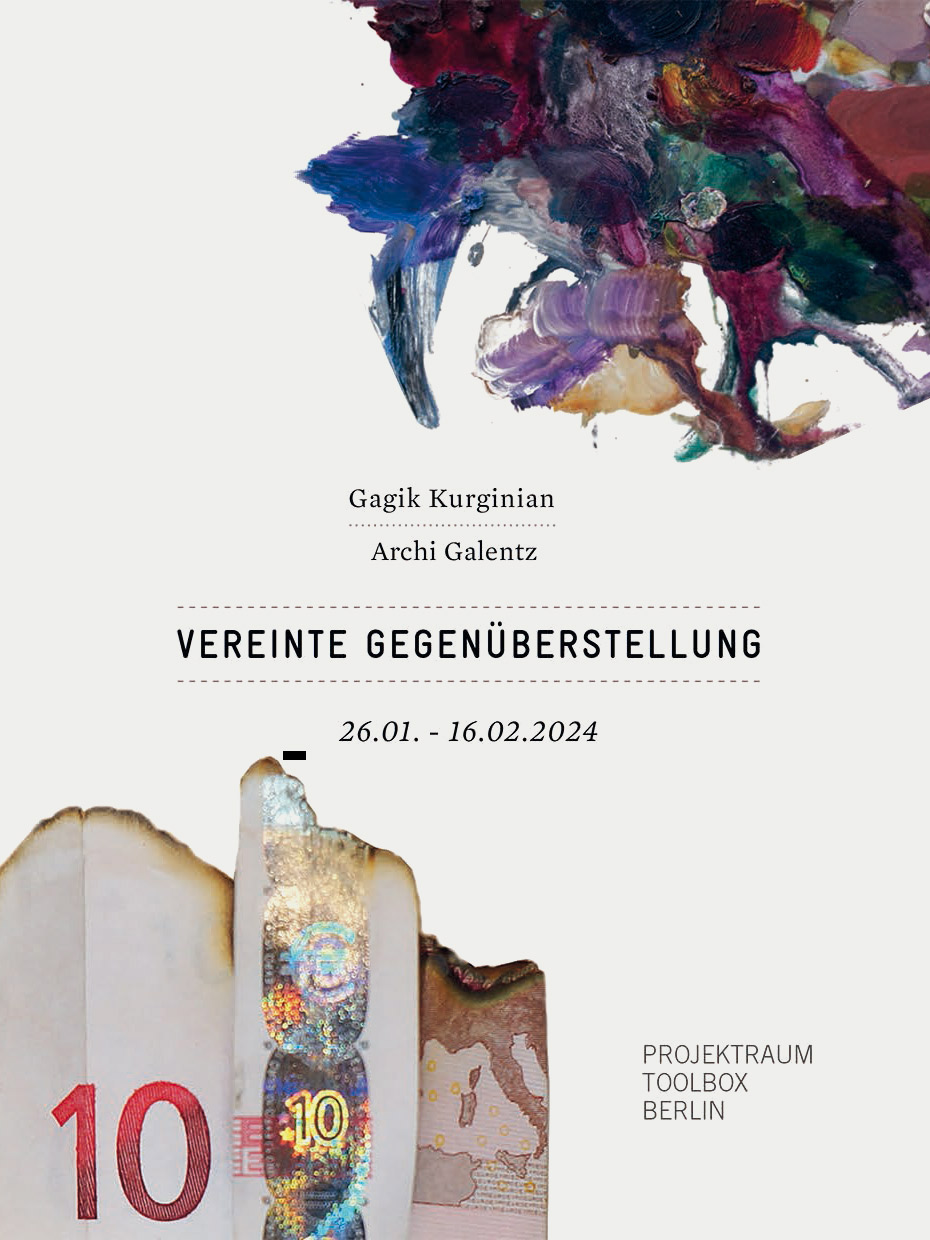
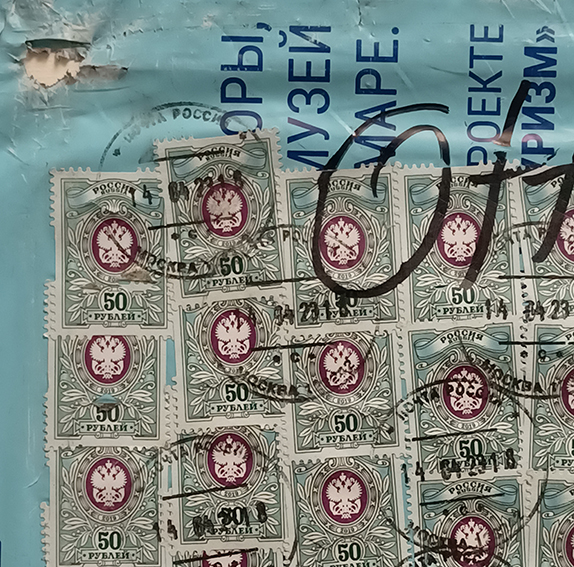
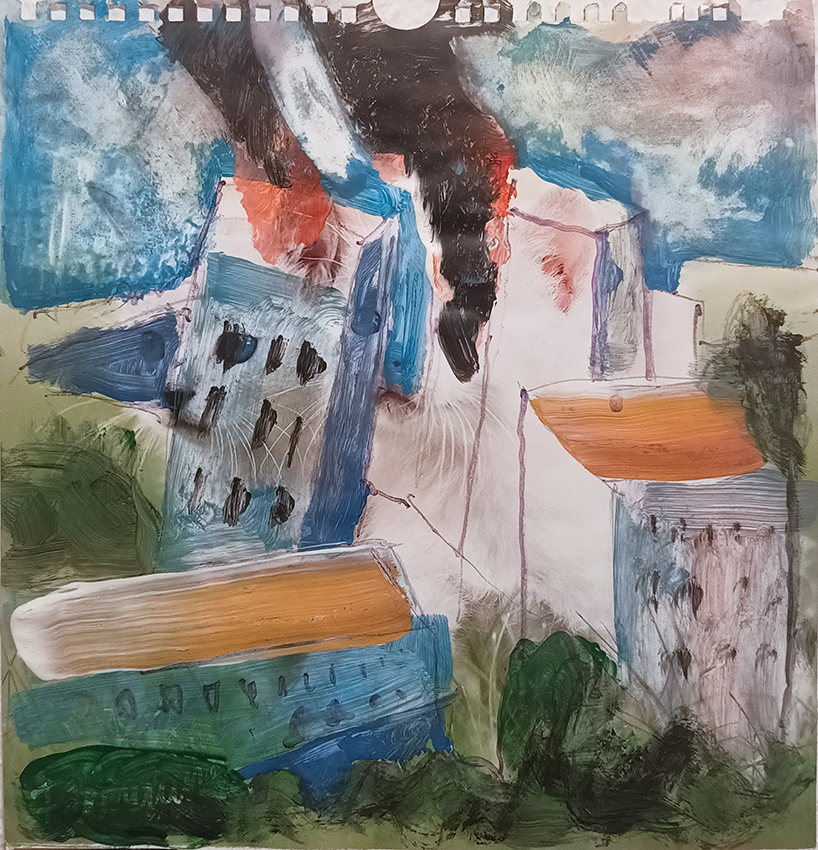
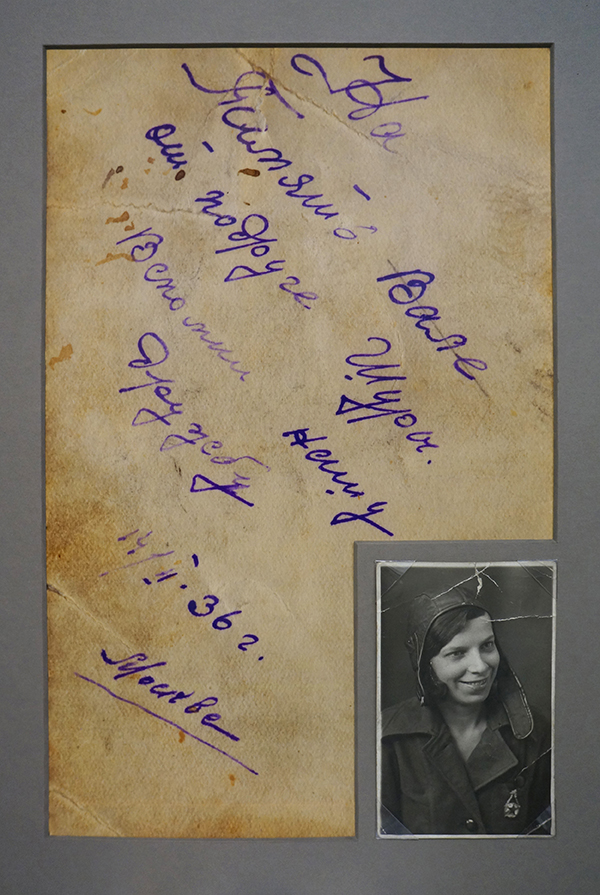
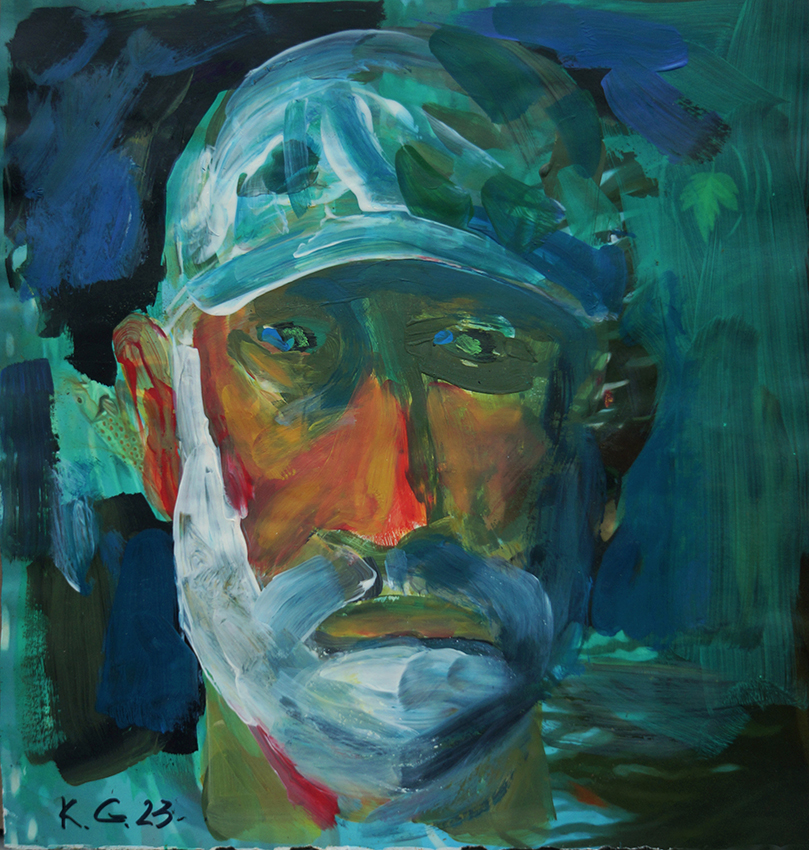
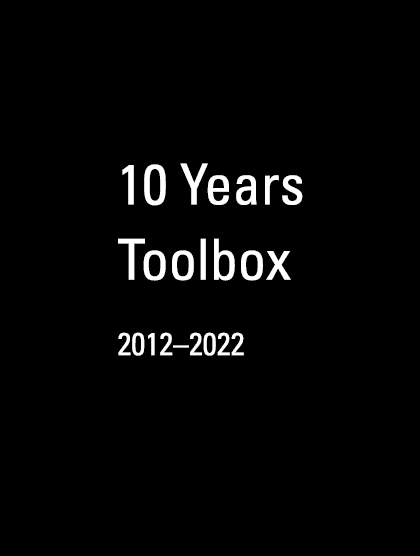

 But how did it all actually start? Gallery Toolbox, which is now celebrating its milestone anniversary, was officially established in 2012. However, the first discussions about a Finnish gallery in Berlin already date back to the early 2010s. Juha Sääski, one of the founding members, recalls how the topic came up regularly with Mika Karhu, for example, in the break room at Aalto University, where they both used to work at that time. These vague visions surprisingly concretised into an executable concept when an opportunity arose in 2012. Mika Karhu was visiting Berlin for his planned exhibition at the Finnish-owned Kuma Gallery in the district of Mitte. However, to the surprise of the artist, who had already arrived in Berlin, the gallerist Suvi Lehtinen informed him that the exhibition could not be organised after all, as Kuma’s activities unfortunately had to be terminated. Yet, after talking to the gallerist for a while, Mika Karhu came up with the idea that he himself could possibly rent the premise left vacant. Lehtinen provisionally agreed on the proposal, and Karhu promised to gather the required members in the coming days.
But how did it all actually start? Gallery Toolbox, which is now celebrating its milestone anniversary, was officially established in 2012. However, the first discussions about a Finnish gallery in Berlin already date back to the early 2010s. Juha Sääski, one of the founding members, recalls how the topic came up regularly with Mika Karhu, for example, in the break room at Aalto University, where they both used to work at that time. These vague visions surprisingly concretised into an executable concept when an opportunity arose in 2012. Mika Karhu was visiting Berlin for his planned exhibition at the Finnish-owned Kuma Gallery in the district of Mitte. However, to the surprise of the artist, who had already arrived in Berlin, the gallerist Suvi Lehtinen informed him that the exhibition could not be organised after all, as Kuma’s activities unfortunately had to be terminated. Yet, after talking to the gallerist for a while, Mika Karhu came up with the idea that he himself could possibly rent the premise left vacant. Lehtinen provisionally agreed on the proposal, and Karhu promised to gather the required members in the coming days. Despite these thoroughly negative predictions, Gallery Toolbox managed to consolidate its position as part of the Kolonie Wedding community, and with its new location, also the number of exhibition visitors increased. Furthermore, through relocating the project space, the activities became more international. Besides Finnish art, the Toolbox has particularly presented works by Berlin-based artists over the years. Through the membership at Kolonie Wedding, Gallery Toolbox has also partaken in art export projects with Sweden, Great Britain and the United States of America alongside Germany. In return, Kolonie Wedding organised a group exhibition at the Hyvinkää Art Museum in 2017. This exhibition was curated by Mika Karhu, Andreas Wolf and Anna E. Wilkens.
Despite these thoroughly negative predictions, Gallery Toolbox managed to consolidate its position as part of the Kolonie Wedding community, and with its new location, also the number of exhibition visitors increased. Furthermore, through relocating the project space, the activities became more international. Besides Finnish art, the Toolbox has particularly presented works by Berlin-based artists over the years. Through the membership at Kolonie Wedding, Gallery Toolbox has also partaken in art export projects with Sweden, Great Britain and the United States of America alongside Germany. In return, Kolonie Wedding organised a group exhibition at the Hyvinkää Art Museum in 2017. This exhibition was curated by Mika Karhu, Andreas Wolf and Anna E. Wilkens. Apart from contemporary art, the Toolbox has offered its spaces also for other cultural events, of which live music has achieved an important position throughout the past years. The internationally renowned saxophonist Harri Sjöström has taken the leading role in organising concerts in the premise. The musician has lived in Berlin since the 1980s and has promoted music export over the past decades. He got to know the members of the Toolbox already in 2013, and ever since, the project space has regularly functioned as a stage for the Soundscapes concerts, which were conceptualised by Sjöström and focus on improvised music. Over time, the concerts, which had started in the Toolbox, expanded from Berlin to Munich and Helsinki. A broad spectrum of Finnish and international top musicians perform at these concerts.
Apart from contemporary art, the Toolbox has offered its spaces also for other cultural events, of which live music has achieved an important position throughout the past years. The internationally renowned saxophonist Harri Sjöström has taken the leading role in organising concerts in the premise. The musician has lived in Berlin since the 1980s and has promoted music export over the past decades. He got to know the members of the Toolbox already in 2013, and ever since, the project space has regularly functioned as a stage for the Soundscapes concerts, which were conceptualised by Sjöström and focus on improvised music. Over time, the concerts, which had started in the Toolbox, expanded from Berlin to Munich and Helsinki. A broad spectrum of Finnish and international top musicians perform at these concerts. In August 2021, the regular exhibition activities could finally be resumed and, although the decade that started bleakly has shown that the future is unpredictable, this has not prevented the planning for the concept’s further development. In some respects, the hopes for the next ten years of the Toolbox are clear: The long-term wish of the members has especially been to establish a second gallery in Helsinki or to organise regular summer exhibitions in Finland, which would function as a direct link between the art fields of the two countries. In turn, the development of the activities and the networking on the German side would be facilitated by a permanent gallerist. Admittedly, these dreams would require funding as background, which has hardly been allocated to the cooperative’s activities over the years, with the exception of a few project grants. In particular, the problem has been the difficulty of obtaining Finnish funding for a project space operating abroad. On the other hand, there has been just as little German funding available for the Finnish-owned Toolbox. If there was external financial support available in addition to the members’ own wallets, the development of the project space’s activities and the realisation of its full potential would be significantly facilitated.
In August 2021, the regular exhibition activities could finally be resumed and, although the decade that started bleakly has shown that the future is unpredictable, this has not prevented the planning for the concept’s further development. In some respects, the hopes for the next ten years of the Toolbox are clear: The long-term wish of the members has especially been to establish a second gallery in Helsinki or to organise regular summer exhibitions in Finland, which would function as a direct link between the art fields of the two countries. In turn, the development of the activities and the networking on the German side would be facilitated by a permanent gallerist. Admittedly, these dreams would require funding as background, which has hardly been allocated to the cooperative’s activities over the years, with the exception of a few project grants. In particular, the problem has been the difficulty of obtaining Finnish funding for a project space operating abroad. On the other hand, there has been just as little German funding available for the Finnish-owned Toolbox. If there was external financial support available in addition to the members’ own wallets, the development of the project space’s activities and the realisation of its full potential would be significantly facilitated.